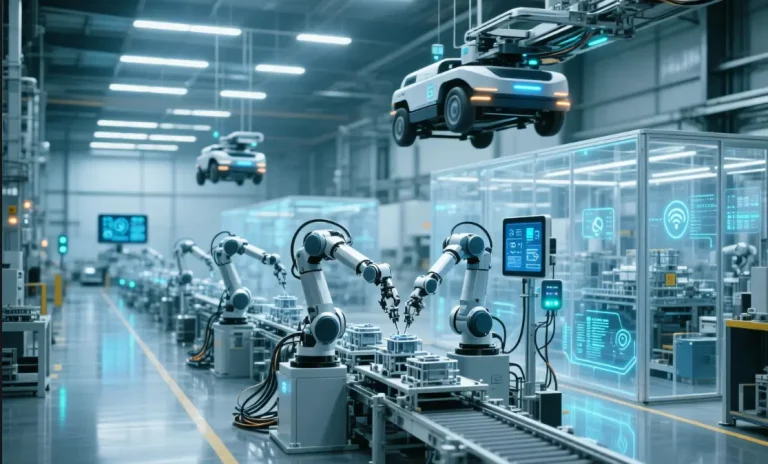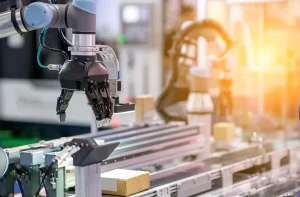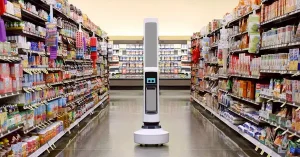China Announces New Smart Factory Initiatives: A Leap Towards Industrial Transformation
China continues to establish itself as a global leader in manufacturing innovation, and its recent announcement of new smart factory initiatives is set to accelerate this trajectory. The smart factory, a concept that integrates advanced technologies like artificial intelligence, IoT, robotics, and big data analytics into manufacturing processes, is at the heart of China’s strategy to boost productivity, ensure sustainability, and enhance competitiveness in the global market.
The Significance of Smart Factory Development in China
At the core of China’s industrial strategy, smart factories represent a transformative approach to manufacturing that moves away from traditional, labor-intensive methods toward highly automated, data-driven operations. This transition is critical given the challenges China’s manufacturing sector faces, including rising labor costs, environmental pressures, and increasing demand for customization and higher-quality products.
The government’s recent policy announcements outline comprehensive support for the establishment and upgrade of smart factories across various industries. Key sectors targeted include automotive, electronics, machinery manufacturing, and chemical production. The focus is on fostering factories that can self-monitor, optimize through real-time data, and seamlessly integrate with supply chains to achieve higher efficiency and lower waste.
Key Features of China’s New Smart Factory Initiatives
-
Integration of Advanced Technologies
A significant component of the new initiatives is the accelerated adoption of technologies such as AI-powered robotics, machine learning algorithms for predictive maintenance, and industrial IoT devices that provide real-time monitoring at every stage of production. These technologies enable production lines to detect and address potential issues before they lead to downtime, improving overall equipment effectiveness (OEE). -
Digital Twin and Simulation
To further enhance decision-making and operational agility, China is promoting the use of digital twin technology. This allows manufacturers to create virtual replicas of their physical factories to run simulations, optimize layouts, and test production processes without disrupting actual operations. Doing so reduces costs and speeds up innovation cycles. -
Green Manufacturing and Sustainability
Environmental concerns are a primary driver behind these initiatives. Smart factories are designed to minimize energy consumption, reduce carbon footprints, and manage waste more effectively. By utilizing smart energy management systems and recycling technologies within factory operations, China aims to meet its ambitious environmental goals while maintaining industrial growth. -
Workforce Transformation
A smart factory is not only about machines; it also involves a skilled workforce capable of managing and optimizing connected systems. China’s initiatives include training programs to upskill workers in digital literacy, automation management, and data analytics, ensuring a smoother transition and empowering employees to work alongside intelligent machines. -
Policy and Financial Support
The government is offering both policy incentives and financial subsidies to encourage enterprises to embrace smart manufacturing technologies. This includes grants for R&D, tax deductions for capital investments in automation, and support for small and medium enterprises (SMEs) to access cutting-edge digital tools that were previously available only to large corporations.
Impacts on Global and Domestic Manufacturing
China’s smart factory push is expected to reshape not only its domestic manufacturing landscape but also its position in the global supply chain. Enhanced automation and real-time data analysis will facilitate mass customization, faster delivery times, and improved quality control—traits highly valued in today’s competitive markets.
Moreover, as factories become more interconnected through IoT and cloud-based platforms, collaboration between different parts of the production chain becomes more streamlined. This could lead to the rise of “factory ecosystems,” where information sharing drives innovation and competitiveness.
Challenges and Future Outlook
While the benefits of smart factories are clear, the path to full digital transformation is complex. Challenges include the high initial costs of technology implementation, cybersecurity risks linked to interconnected industrial systems, and the need for continuous workforce development. Furthermore, interoperability between different technology platforms remains a hurdle for many manufacturers.
However, China’s coordinated approach, combining strong government support with industry collaboration, suggests these challenges will be systematically addressed. The new initiatives also promote international cooperation in research and standard-setting, which may help align technologies and practices worldwide.
Conclusion
China’s announcement of new smart factory initiatives marks a pivotal step toward the future of manufacturing. By integrating cutting-edge technology, fostering sustainability, and empowering its workforce, the country is setting a benchmark for industrial modernization. The smart factory will not only enhance China’s manufacturing capabilities but also contribute to the global shift toward intelligent, efficient, and responsible production methods. As these initiatives take root, the manufacturing sector inside and outside China is poised to undergo significant transformations that will impact economies, industries, and labor markets for years to come.




